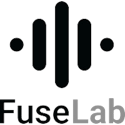Windchill PLM-solutions
More than ever, manufacturers need to share digital product information, dynamic data visualisation, and collaborate easily. Windchill improves how product development is performed using secure data access for multidisciplinary and geographically distributed teams, quality-oriented processes, and a data-driven approach to production.
Product Data Management (PDM)
In most cases, the first step in your journey towards a PLM solution is to manage your digital product data. We call this Product Data Management where product information is managed and distributed across globally distributed teams where multiple product development tools can be used. PDM facilitates the simultaneous control of global collaboration in design environments, including requirements documents, system models, design (mechanical, electrical, and software), simulation, validation, and verification. It ensures that every model, drawing, or document is safely and easily retrievable in a centralized platform. Parts and document searches use the full history and associated relationships of each item of content. You use PDM to ensure that every version and revision is tracked, required approvals are carried out, and manual tasks are automated.
PDM with Windchill benefits
- Engineering efficiency
Manage and link all product-related data so that only correct versions of documents are distributed to the right staff at the right time. - Improve your internal and external collaboration
Both internal and external engineering teams can provide product development updates, submit ideas, give and receive feedback. All in real time. - Improving data quality
Manage all CAD tools (Creo, SolidWorks, Inventor, NX, Catia, and more) in a single environment to ensure information is not missing or misinterpreted. - Document Management
Use a single system to manage all required documents. It manages printing, configurable watermarks, and more. - Increasing your IP Protection (Intellectual Property)
Control access to internal and external users authorised to view and edit data. Provide additional control by using security labels (e.g. ITAR Clearance) to make documents only available to specific colleagues. - Reduce information search times
Assign classification and attribute values as components and documents are developed in a standardised manner. This makes it easier to read, translate, and search data which makes it unnecessary to have an intelligent numbering system.
Highlights
- Product Data Management
- BOM Management
- Change & Configuration Management
- ECAD Data Management
- Collaborative Product Development
- Manufacturing Process Management (MPM)
- Parts Classification
- Product Variant Management
- Secure Supply Chain Collaboration
- Requirements Management and Validation
- Quality Management
- Service Process Management
Integrations
Windchill's open architecture enables easy integration with other business systems, including Industrial IoT. It also provides a solid foundation for a product-driven Digital Thread. PTC's PLM system provides extensive out-of-the-box functionality and highly configurable role and task-based apps. The interface designed for expert users can be extended to provide a specific interface for non-expert users who need extremely easy access to product data.
From PDM to PLM
Product Lifecycle Management forms the basis of the ‘digital thread’ and ensures flexibility within the supply chain and business continuity. Organisations reduce costs, speed time to market, and deliver the highest levels of quality and compliance using data management and traceability throughout the product cycle from concept to finished product and service.
Important components in the Windchill PLM solution
BOM Management
Part list management consists of identifying, capturing, configuring, and managing all product data developed during the life cycle of a product. The effective management of part lists is crucial to the success of an organization , regardless of the size or number of parts in the product. BOM transformation makes it possible to create and maintain associative engineering and production and service part lists. Windchill provides textual and graphical (visualisation) support to clearly identify the differences between part lists.
Change & Configuration Management
Windchill automatically manages, communicates, and tracks changes and configurations throughout the company. All aspects of the change are easily accessible during the review and approval process, which facilitates organisational collaboration. Ongoing changes are automatically flagged for quick identification of the latest versions of affected parts, documents, and CAD designs. The history of how a product was created and the impact of a change can be assessed before implementing a change.
ECAD Data Management
Manage ECAD data by synchronising ECAD libraries with PLM components and MCAD models (Zuken, Cadence, Altium, Eplan, and more). This provides easy and accurate access to complex electronic design data.
Collaborative Product Development
Collaborative product development is a powerful PLM feature that allows globally distributed teams to perform project and design work together. In today's world, organizations must deal with globally distributed teams working in silo systems. Often, stakeholders involved in the product development process cannot access the most up-to-date product data. These barriers to collaboration cause delays in product development. It also leads to costly rework, production problems that affect quality, slow response times of design and production partners, and multiple service visits to the customer.
Manufacturing Process Management (MPM)
Design everywhere, produce everywhere: ensure a seamless flow of information between engineering and production.
The manufacturing bill of materials (MBOM) is the key to how the production process works. This is where you anchor your product configuration rules and introduce new materials. You use MBOM to define the process planning for how your product will be assembled (routing). Technical work instructions are then made available to the end-user on-demand, either on a screen or via augmented reality experiences, enabling faster and more accurate implementation.
Parts Classification
Many companies are challenged by innovation and product complexity because it leads to more parts that are hard to find and poorly managed. A common outcome is the duplication of parts. This hindrance can slow the progress of (and increase costs for) procurement, production, quality, sales, and service. Reusing parts reduces inventory complexity, helps identify synergies in the supply chain, and minimises unnecessary inventory costs for the aftermarket.
Product Variant Management
Platform strategies begin when a decision is made to define products in a new or different way. These are built on a basic product platform with the key features and functionality common to all planned variants.
Product variant management within Windchill allows you to strategically design, create, manage, and validate product variants. You deliver a robust modular solution using the platform options, choices, logic, and configuration rules directly linked to the bill of materials (BOM), 3D visualisation, and CAD data. Platform information is fully managed throughout the life cycle, making it easy to validate and share the product details with other enterprise solutions, such as ERP and CPQ (Configure, Price, and Quote).
Secure Supply Chain Collaboration and Optimization
Flexibility is paramount within a rapidly changing technological, geopolitical, regulatory, and economic environment. Nevertheless, buyers and technicians struggle in such an environment to understand the dependencies in the supply chain and the scope of their work.
Strategic procurement teams can work simultaneously with their supply chain partners to securely share up-to-date, accurate product information. They can speed up time to market and improve flexibility by better understanding component characteristics, such as approved suppliers, product data sheets, where a component is used, and when a change request or a problem report occurred.
Requirement Management and Validation
Efficient management and validation of requirements are more than just an integral part of the development and engineering of complex products and systems. Requirements Management is essential for mitigating risks and ensuring customer satisfaction.
Our solutions enable teams to specify, define, verify, and validate every aspect of the product. They offer end-to-end traceability, built-in change and configuration management, and standards-based collaboration across teams, suppliers, and supply chains.
Quality Management
Product innovation requires speed, flexibility, and compliance. This is only possible when product development processes are streamlined and all stakeholders have access to the most accurate data. The Windchill quality management solution focuses on both. It creates data management and traceability based on a single source of real-time information accessible to all stakeholders.
Changes in requirements and non-conformances are connected and automated allowing engineers to solve CAPAs faster and produce higher quality designs. This efficiency ultimately results in higher quality, fewer rejects, and much less rework and failures. This reduces costs and improves customer satisfaction.
Service Process Management
Windchill PLM enables companies to centrally manage all service information related to products, systems, and components. The main advantage of this product-oriented approach is that companies can maximise the reuse of technical and configuration-specific information. A single source of truth for the latest service information is crucial for technicians, so they can remain productive and efficient throughout the service life cycle.
PTC's service process management solution ensures technicians have the right information at the right time. Part lists, technical documentation, and illustrations of CAD models are familiar because these are automatically linked and updated with the latest technical and design information. Service documentation is then released earlier. This results in a faster time-to-market and support and service engineers resolve issues faster, which increases customer satisfaction scores.
PTC's Service Lifecycle Management solution uses an engineering or manufacturing part list (EBOM or MBOM) to define the parts and kits used in the service environment (service part list or SBOM). The SBOM provides parts information for specific product configurations that are automatically generated for consistent and accurate repairs. SBOMs are kept up-to-date with change management workflows that provide the service organisation with early and frequent insight. Integrated 3D CAD models are used to create easy-to-understand interactive graphics.
Operational improvements – such as reducing customer downtime, improving first-time-fix rates, eliminating errors and waste – all depend on technicians having the right service and parts information when they need it.
Scheduled group
training sessions
training sessions
August 2025
There are no trainings this month.
Case in the spotlight
I had been walking around for years with the idea of improving the 3D printer. And now, together with Innoptus, I have made that idea concrete. It has become an innovative product that performs remarkably better than the traditional 3D printer.


